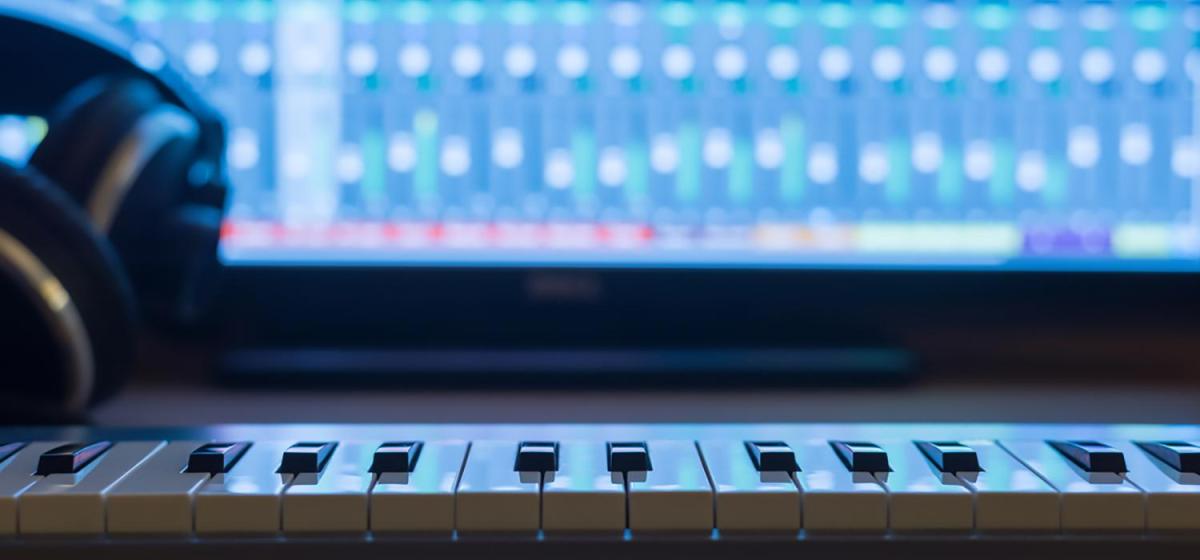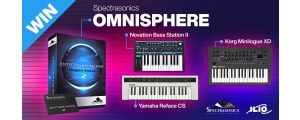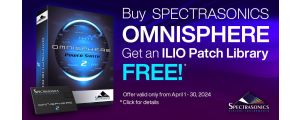Utilize Technology and Learn Your Tools
In today’s day and age, the home studio has never been as powerful as it is right now. You can literally create a masterpiece sitting in front of your laptop. DAW’s, plug-ins, and software instruments such as Spectrasonics’ Omnisphere and Keyscape have opened up the floodgates for anyone to create professional music, even with an extremely limited budget. Many plug in designers have created nearly identical replicas of nearly every legendary synth and keyboard, compressor, mic preamp, and tape machine used in major studios over the last six decades. Research the studio gear used on albums that you are inspired by and find a plugin that models that exact piece of gear that created the sound. You will come to find that certain plugins work to achieve the sound you’re looking for, and others will do things you may have never considered trying. Instrument plugins such as Keyscape take direct samples of famous classic keyboards, faithfully converting them into hyper-realistic MIDI instruments. Do a blind comparison between the original instrument and the Keyscape version and it’s very unlikely that you’ll be able to find a difference. Here’s a video of Robert Glasper playing a classic suitcase electric piano, my personal favorite:
https://www.youtube.com/watch?v=l4oHRyHmkc8
In addition, Omnisphere is probably the most programmable synth plug-in you can find, with nearly every parameter able to be tweaked to obtain that exact sound you are searching for. Spending some time studying the basics of synthesis will definitely help you get to that sound quicker, which leads me to the next important aspect of translating sounds...
Build A Template
Once you have an idea in your head and that spark of creativity has been lit, the last thing you’ll want to do is sit at the computer creating tracks and plugins, samples, etc. You just want to start creating!
Every DAW has options to build templates. On Pro Tools, there are a ton of premade templates that offer up different scenarios for whatever situation you’re about to embark on, whether it be producing, mixing, or tracking live. Pull one up, make a few slight tweaks, and you are ready to go.
Using other DAWs like Ableton, Logic, Reason, etc, the best way to go about building a template is to pull up a session that you have worked through all the way into a finished song. From that session, go to your preferences and find the “save current setup as default” tab and save the template. Now, everytime you open up a new session, you will already have familiar tracks, returns, and busses all mapped out so that you can get right to work.
Once your template is built, dig in even further, creating folders and effect racks.
Making folders for different plugins, instruments, and samples that you know sound a certain way can rapidly cut down on time spent clicking and give you more time for playing. Make folders for different effects like ambience, delays, filters, analog modeling, compression, etc., and you can go straight to the folder you need when you have the sound’s idea in your head.
In addition, creating effect chains is an absolute essential in the production process when you don’t have time to waste. Creating chains of effects for different applications like Vocals (EQ, compression, reverbs, delays), Drums (saturation, filters, EQ), Guitars (distortion, panning, phasers), and more will save you a considerate amount of time and get you to your destination much quicker. Remember that Signal Flow forms the basis of effect chains. Plugins work in a linear fashion exactly like they would in the analog world. The plugin before will always affect the one after (delay -> saturation -> filter), and understanding Signal Flow is the key to sound design!
Google and Youtube
Another perk of being a creator in the 21st century is the luxury of Google and Youtube. We have a whole world of information at the tips of our fingers, and that certainly includes music production. Whenever I just can’t for the life of me figure out a solution to an audio challenge, I will go to Google and Youtube and search keywords until I find a video or message board pertaining to my situation. There are so many incredible teachers on Youtube, who dedicate time to helping others, all for free. It really doesn’t get better than that.
It’s no longer a necessity to go to Audio Engineering school to learn the tricks of the trade. In fact, there are great numbers of professional engineers who offer up their expertise on Youtube. One of my favorite engineers to learn tricks from is Dave Pensado, who runs Pensado’s Place. Dave Pensado is a Grammy Award-winning mix engineer, who has been mixing since the 70’s. A great thing about Pensado is that he mixes mostly “in the box,” which means he uses plugins instead of analog gear, a parallel to the budget-minded artists out there. Check out his channel for in-depth mix tutorials and interviews with engineers, producers, and artists alike.
Two additional mixing channels I highly recommend are Behind The Speakers, created by Jason Moss, an excellent teacher providing lessons on essential engineering basics, and Warren Huart’s Produce Like A Pro. Huart (The Fray, James Blunt, Aerosmith) is an English producer, musician, composer and recording engineer who provides heaps of priceless engineering information at no cost.
On the creative side of Youtube, without a doubt my favorite channel is Red Bull Music Academy. RBMA has been interviewing legends in music for the past 20 years, and has recently started uploading their archives onto Youtube. Dig into their enormous collection of one to two hour interviews with a wide-ranging variety of creators who showcase their individual creative and technical approaches to making music.
Hopefully these tips can help you on your path to making the sound in your head a reality. If anyone has some tricks that they use to accomplish their production goals, let us know in the comments, and good luck out there!
— Josh Munk
Josh Munk is a producer, musician, and audio engineer based in Los Angeles, California.







